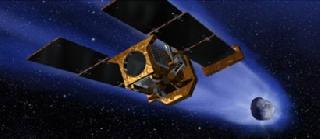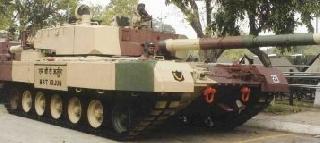
PASADENA, US (AP): Love is in the air on Earth and in space too!
Some 338 million kilometres away, a comet-hunting spacecraft is ready to get up close and personal with its cosmic match on Valentine's Day.
Barreling along at 38,600 kph, NASA's Stardust craft will swoop within 200 kilometres of comet Tempel 1 – close enough to take high-resolution images of the surface.
If all goes as planned, it will be the first time that two different spacecraft have visited Tempel 1, a potato-shaped comet half the size of Manhattan.
Scientists plan to stay up all night poring through the images to study how the comet's surface has changed.
Stardust will be operating autonomously during the rendezvous.
The closest approach is expected to occur at 11:40 p.m. EST (0910 IST).
Since Stardust's antenna will be pointed away from Earth during the encounter, it will take some time for it to download images and data after re-establishing contact.
Scientists are interested in studying comets because they could provide clues to how the Sun and planets formed.
Comets are thought to contain frozen primordial ingredients that date back to the birth of the Solar System some 4.5 billion years ago.
Tempel 1's love life is like a celestial soap opera.
In 2005, it had a less-than-romantic encounter with another NASA craft dubbed Deep Impact.
Instead of flying by Tempel 1, Deep Impact aimed a copper bullet that crashed into the surface and excavated a crater. So much dust and debris streamed out that Deep Impact was unable to see the result of its destructive act.
NASA hopes to glimpse the crater when Stardust passes near the Deep Impact site.
Since launching in 1999, Stardust has journeyed 3.5 billion miles.
Its first love was not Tempel 1.
In 2004, Stardust zipped past comet Wild 2, scooping up microscopic interstellar dust and comet grains in a capsule that was later jettisoned to Earth.
The $300 million mission gave scientists their first collection of comet particles gathered in space.
Since Stardust had plenty of fuel after the Wild 2 encounter, NASA in 2007 decided to recycle the spacecraft for a fling with Tempel 1 for $29 million – a fraction of the cost it would take to start a mission from scratch.
After Valentine's Day, it will have about a cup of hydrazine fuel left – not enough to visit another target.
 Previous Article
Previous Article Next Article
Next Article














The Indian Air Force, in its flight trials evaluation report submitted before the Defence Ministry l..
view articleAn insight into the Medium Multi-Role Combat Aircraft competition...
view articleSky enthusiasts can now spot the International Space Station (ISS) commanded by Indian-American astr..
view article